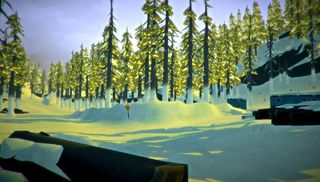
Van Lierop cites Cormac McCarthy's none-more-grim novel The Road and Fallout 3 as The Long Dark's other key influences. Bethesda's post-nukes RPG sparked his imagination because: "Everything you saw on the horizon was potentially an interesting place to explore. I found that so compelling, and I remember thinking: 'What would this be like if there was no combat? What if it was just wandering through the environment? There's no zombies, there's no nothing, you're just looking for places and trying to survive.'"
The design has evolved since then, and you will be able to shoot animals, but with resources inevitably scarce that often won't be the best approach. So, if combat isn't at the core of what The Long Dark is going to be, what is? The game begins in the immediate aftermath of your plane crash-landing in the wilderness as a result of the unexplained geomagnetic event. As pilot Will McKenzie, you stumble out of the wreckage, and presumably immediately begin to regret not wearing thermal underwear for the flight.
Though this is an open world, which you're free to explore as you choose, it won't be as open as, say, Skyrim. The comparison van Lierop makes instead is with Stalker. "It didn't have huge contiguous maps where you could just move seamlessly from one area to another—you would go through a connective portal, and it's the same for us." The point here is that it will make it easier for Hinterland to funnel the player and manage the narrative aspects of the game. Specifically, the encounters you need to have with other humans to drive the story forwards.
In addition to the not insignificant task of staying alive, you'll gradually discover how the world has changed in the aftermath of magnetgate, as no-one else is calling it, and perhaps eventually discover the cause of the disaster. That's a way off though. The Long Dark is being built in seasons, in both senses of the word, the first of which will be winter, and will comprise an as yet unspecified number episodes before the focus shifts to spring. The arc will cover an entire year, and the suggestion is that you can expect significant cast changes over the course of it.
Again The Walking Dead link seems clear, but van Lierop doesn't think you'll mind the lack of zombies. "I think the fascination with the zombie genre particularly is almost a cathartic thing. The more zombies we can shoot in videogames, the more control we might feel about the way the world is around us. Maybe the world feels like it's falling apart around us and that's our way of coping with it. [In The Walking Dead] they're not even that much of a threat. It's really the humans who survive, and how society's mores change in light of the zombie invasion: that's the real threat."
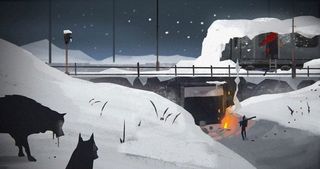
It will be key to the potential success of The Long Dark that your encounters with strangers have some subtlety to them. Something that's tricky to achieve, beyond creating ever more intricate dialogue trees. I ask van Lierop how they're hoping to handle player interaction with NPCs. "You have trepidation," he says, "you're skeptical about them, but you also recognize to some degree that your success depends on being able to interact with other survivors and learn what they know."
Again, in many instances combat will be a possible outcome, but likely a disastrous one for you, given your fragility. But as to how to give those meetings depth and nuance, van Lierop isn't ready to discuss what he thinks the solution will be, other than it's definitely on the to-do list. In addition to the main narrative mode, there's also a pure sandbox variant in which your goal will be to survive for as long as possible, which is what the team has been spending most of its energy on recently. "For a long time nobody could break through the two-day mark," he says, before excitedly telling me that someone just managed to hit five days.
The biggest gaming news, reviews and hardware deals
Keep up to date with the most important stories and the best deals, as picked by the PC Gamer team.
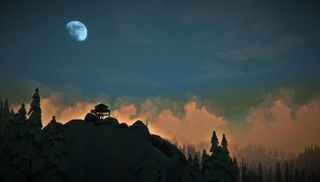
Before we finish, I ask him for a typical example of how it can go wrong in survival mode, and he tells me a story about trying to make a nighttime dash from a lookout tower to a supply cache. As the sun set, and the weather began to close in, he began to hear animals in the trees. To help navigate better, he lit a flare, before climbing a hill only to find himself face to face with a wolf. Startled by the flare, it scampered off into the night. "I thought, 'Shit. If I hadn't had this flare in my hand, as soon as I came over that edge…'"
The story doesn't have a happy ending. The weather closed in, swiftly turning into blizzard conditions–but van Lierop designed the map, if anyone could find his way to safety in the whiteout, it ought to be him. "I walked and walked and walked," he says. "I came across various landmarks, and I thought I was on my way. I was very close to death when I thought I was at my destination, and I did that classic thing that you always read about in survival literature, which was I ended up realizing I was back at the lookout tower where I had started!"
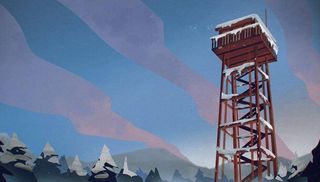
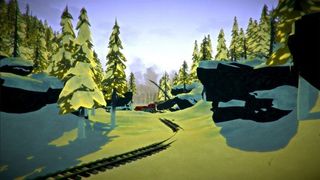
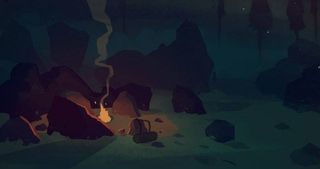
With over two decades covering videogames, Tim has been there from the beginning. In his case, that meant playing Elite in 'co-op' on a BBC Micro (one player uses the movement keys, the other shoots) until his parents finally caved and bought an Amstrad CPC 6128. These days, when not steering the good ship PC Gamer, Tim spends his time complaining that all Priest mains in Hearthstone are degenerates and raiding in Destiny 2. He's almost certainly doing one of these right now.
Most Popular







